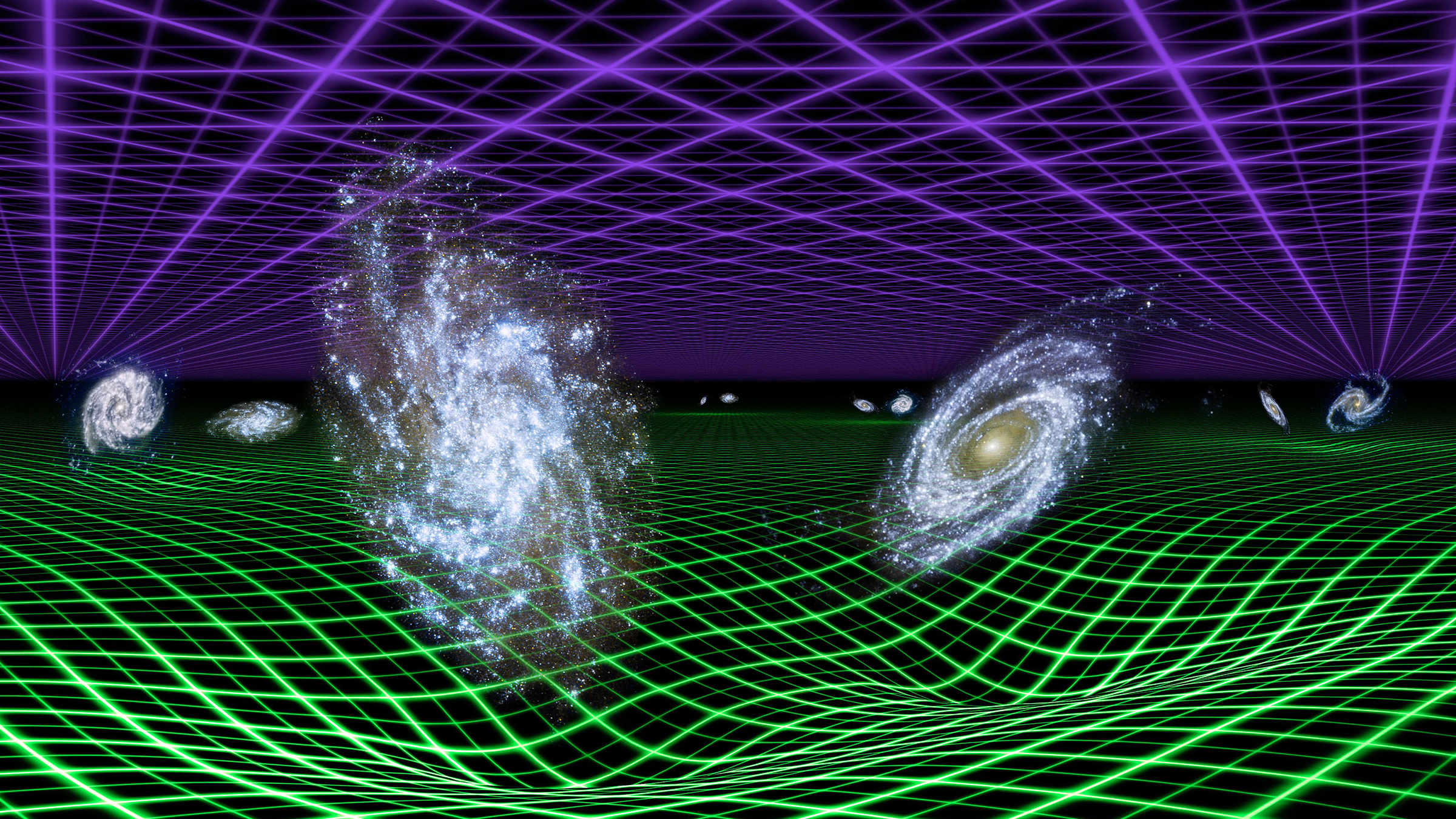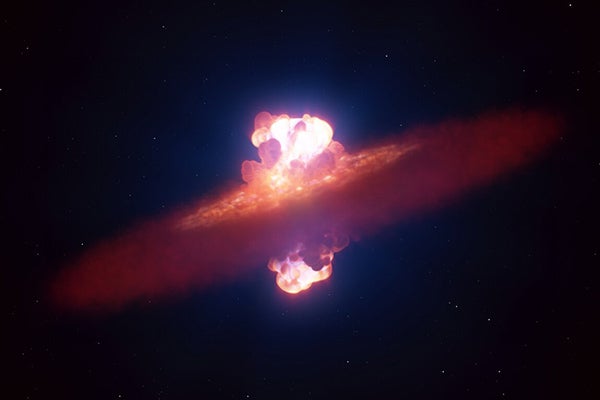The Race for Dark Energy
Karl Gebhardt explains the two leading ideas for what dark energy might be.

Locked in a cosmic tug of war, dark energy (purple) pushes the universe apart, while gravity (green) pulls it together. At the moment, dark energy is winning. Image credit: NASA/JPL-Caltech.
This is the second of a three-part series on general relativity.
Einstein's Theory of General Relativity, which describes how gravity works, turns 100 this month. The theory has successfully explained a lot of what we observe out in the universe; but there are signs that it's incomplete. In the 1990s, astronomers observed that the expansion of the universe is speeding up, as if some mysterious force is pushing everything apart faster and faster. Nearly 20 years later, one of the biggest unanswered questions in science is: what is this dark energy? Not only was dark energy not predicted by general relativity, but its mere existence might mean that the theory needs to be tweaked or even replaced.
"Dark energy is the name we apply to our misunderstanding of how the universe is expanding," says Karl Gebhardt, a professor of astronomy.
According to Gebhardt, among astronomers there are two leading ideas for what dark energy might be.
One is that empty space itself pushes matter apart, sort of like anti-gravity. In this view, space is filled with something called vacuum energy. To account for it, scientists would have to add an extra term to the equations of gravity called the cosmological constant.
Another possibility is that at great distances, gravity becomes weaker than the equations of general relativity say it should. So the accelerating rate of expansion of the universe wouldn't be due to a mysterious new force, but would be due to gravity's loosening grip on a universe already expanding from the Big Bang.
Gebhardt is part of a team that could be close to discovering which, if either, of these two explanations for dark energy—each with big implications for the future of general relativity—is correct. They've spent the last decade designing and building what amounts to the world's fastest spectrograph. The project, based at the University's McDonald Observatory, is a key piece of the newly upgraded Hobby-Eberly Telescope, now the world's third largest telescope.
The Hobby-Eberly Telescope Dark Energy Experiment (HETDEX) will help measure the rate of expansion of the universe at different times in its history, which will help theorists constrain their models of dark energy. Researchers plan to start collecting data in 2016.
Gary Hill, the chief astronomer of the observatory, heads up HETDEX. He says while the immediate quest is to explain dark energy, their findings might end up taking scientists one step closer to a "theory of everything" that would replace general relativity.
"Dark energy is a phenomenon, but underlying it, there must be some physics that we don't understand and that's what we really want to understand," he says.
This is the second part of a three-part series on general relativity. In part 1 (featuring physicists Steven Weinberg, Willy Fischler and Raphael Flauger), we examine how general relativity breaks down inside black holes and at the origin of our universe. In part 3 (featuring physicist Richard Matzner), we explain how UT scientists have tested the predictions of general relativity for more than four decades.



